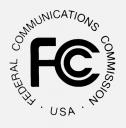Meeting today on cross-ownersip, cable regs; see agenda or click here for video feed
The Federal Communications Commission was created during the Depression. A holdover from before “govmint” became a dirty word, its five members are appointed by the president and confirmed by Congress under rules meant preserve a three-two balance between the political parties.
Today the five commissioners, two democrat and three republican, will perform the public ritual of ratifying policies crafted in private with the connivance of the entities it regulates. If that seems harsh, please scan the September 2007 report from the General Accountability Office, the audit bureau of the Congress. The title gives a hint as to the content. GAO says: “FCC Should Take Steps to Ensure Equal Access to Rulemaking Information.” Ya think?
Whatever the nattering nabobs may say about the FCC’s closed-door policy, it does have one advantage. Generally speaking understanding the agency is as easy as one, two, three — which is the number of votes needed to put an item on the agenda and get it ratified, without any of the danger or drama that comes with unpredictibility.
With this in mind, today’s agenda suggests three commissioners are ready to approve the item titled, “Promoting Diversity of Ownership in the Broadcasting Services.” Great! But what could it mean? Is the FCC ready to throw a bunch of broadcast licenses into a hat and let new folks take over, say, Channel 4 in San Francisco?
Alas, this not to be. Instead the FCC intends to promote “diversity of ownership” by lifting an anachronistic rule that currently prevents Rupert Murdoch from buying a more diverse portfolio of broadcast media properties.
Here’s the deal. Since 1975, no newspaper has been allowed to own a radio or television station in its own metropolitan area, and vice versa. This so-called media cross-ownership rule was intended to prevent any person or company from having newspaper and television power in the same town. Grassroots media activists want to preserve this cross-ownership ban. Fans of the Invisible Hand say that makes no sense in an age when every YouTuber with a copy machine already has cross-ownership powers. Free market thinkers say the FCC hasn’t gone far enough in the proposal to be ratified today.
Here’s what we do know: three commissioners believe that mass media face such intense competition from Internet media that it makes sense to lift the ban and let Old Media get bigger to better battle New Media – a strategy that has worked ever since the dinosaurs.
One other item on today’s FCC agenda rated a mention in the industry zine Paid Content, because it violates the agency’s due process — write the rule in private and put it on the agenda only when it gets three votes. Paid Content editor Staci Kramer writes:
“Chairman Kevin Martin is trying to push through . . . a last-minute piece of bureaucrat-ese that would escalate the commission’s ability to regulate the cable industry . . . At issue: the 70-70 rule, which gives the FCC more power over cable when cable penetration reaches 70 percent of U.S. households. Martin’s finding that the barrier has been broken is based on data gathered by one publisher who says the data is incomplete. In the meantime, at least three commissioners have challenged the findings . . . The plan has drawn heavy criticism from Republican legislators and from others who point to an increasingly more competitive video marketplace where cable loses basic subs while alternatives like satellite and telecoms are gaining.”
Chairman Martin, if you are listening please let me remind you that everything works more smoothly when we honor the FCC’s golden rule. So please, count after me: one, two, three.
